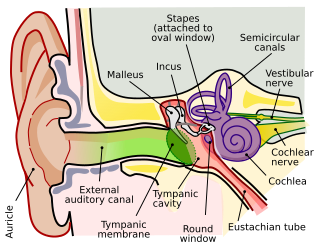Overview of Anatomy of the Human Ear
The human ear is a very important and complex Structure Which Help detecting sound Wave and maintaining balance. It is divided into three Parts : (outer, middle and inner part of ear)
1 The outer ear,
2 Middle ear,
3 Inner ear.
Each Part has specialized Size and structures that work together to process auditory information and assist with equilibrium.
1. Outer Ear (External Ear)
It is a outer and visible part of ear and the entry point for sound waves. It includes:
a. Pinna (Auricle)
The cartilage-covered skin structure that captures sound waves.
Shapes and directs sound into the auditory canal.
b. External Auditory Canal (Meatus)
A tube-like passage that transmits sound to the eardrum.
Contains glands that produce cerumen (earwax), which protects the ear by trapping dust and microorganisms.
2. Middle Ear
The middle ear is an air-filled cavity located behind the eardrum, responsible for transmitting vibrations to the inner ear.
a. Tympanic Membrane (Eardrum)
It is a thin membrane and vibrates by sound waves.
Separates the outer ear from the middle ear.
b. Ossicles
Three tiny bones that connect each other to amplify and transmit sound vibrations:
Malleus (Hammer) – connected to the eardrum.
Incus (Anvil) – bridges the malleus and stapes.
Stapes (Stirrup) – Smallest bone of body that transmits Sound Wave to the inner ear via the oval window.
c. Eustachian Tube
A canal start from middle ear and open into nasopharynx (upper throat).
maintain Both side Eardrum Air Pressure.
3. Inner Ear (Labyrinth)
The inner ear is a fluid-filled structure embedded in the temporal bone. It is essential for both hearing and balance.
a. Cochlea
This is a spiral-shaped organ in inner ear that converts sound wave into electrical signals.
Lined with sensory hair cells that respond to different sound frequencies.
transmit signal to the auditory nerve (cochlear nerve), auditory nerve carries signals to the brain.
b. Vestibular System
Maintains balance and spatial orientation.
Includes:
Semicircular Canals – detect rotational movements.
Utricle and Saccule – detect linear movements and gravitational forces.
Sends balance signals to the brain through the vestibular nerve.
Clinical Significance
Understanding ear anatomy is vital in diagnosing conditions such as:
Otitis media (middle ear infection)
Tinnitus (ringing in the ears)
Hearing loss (conductive or sensorineural)
Meniere’s disease (Excessive fluid Accumulation in inner ear that affect Balancing and Hearing)

